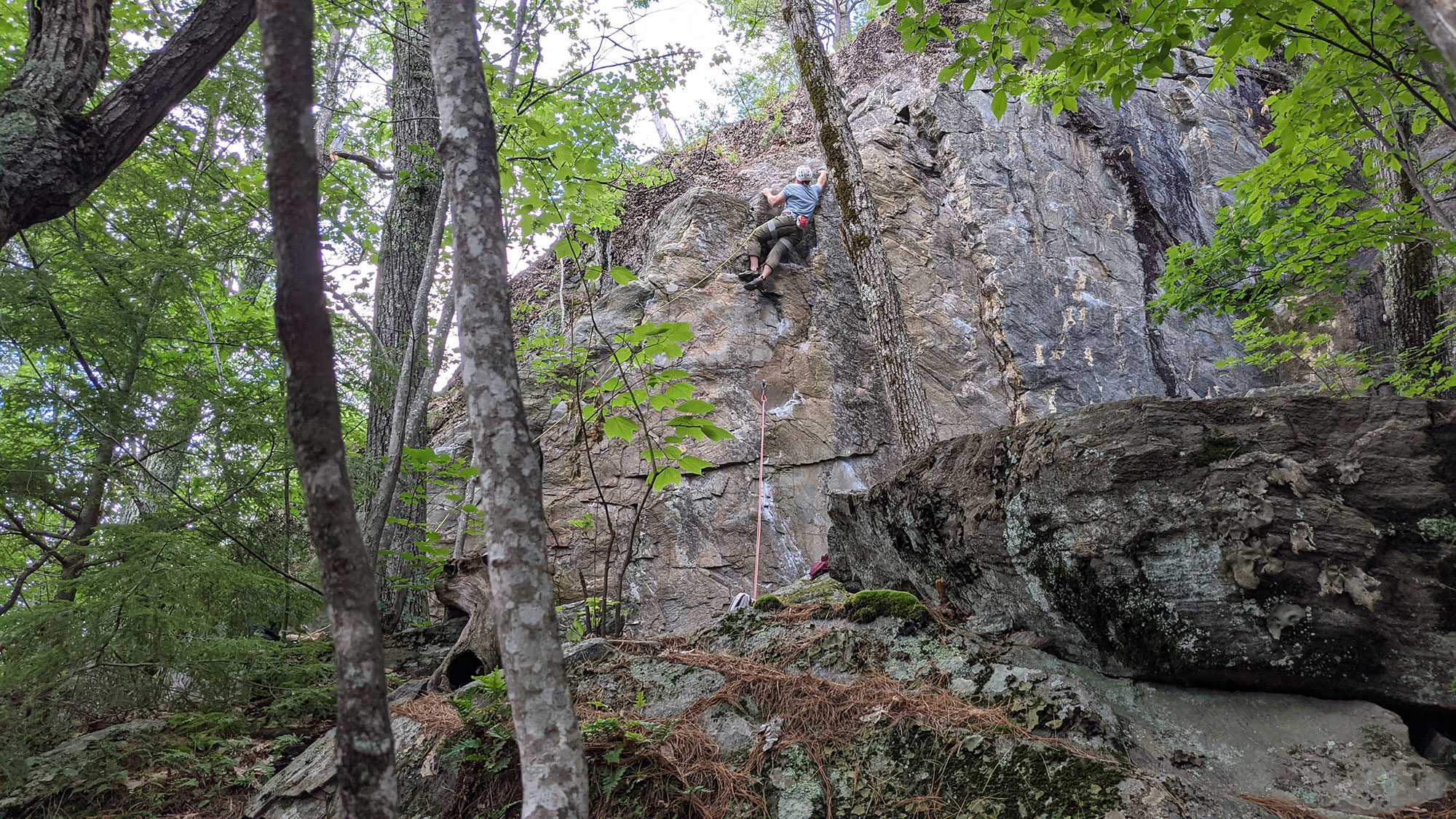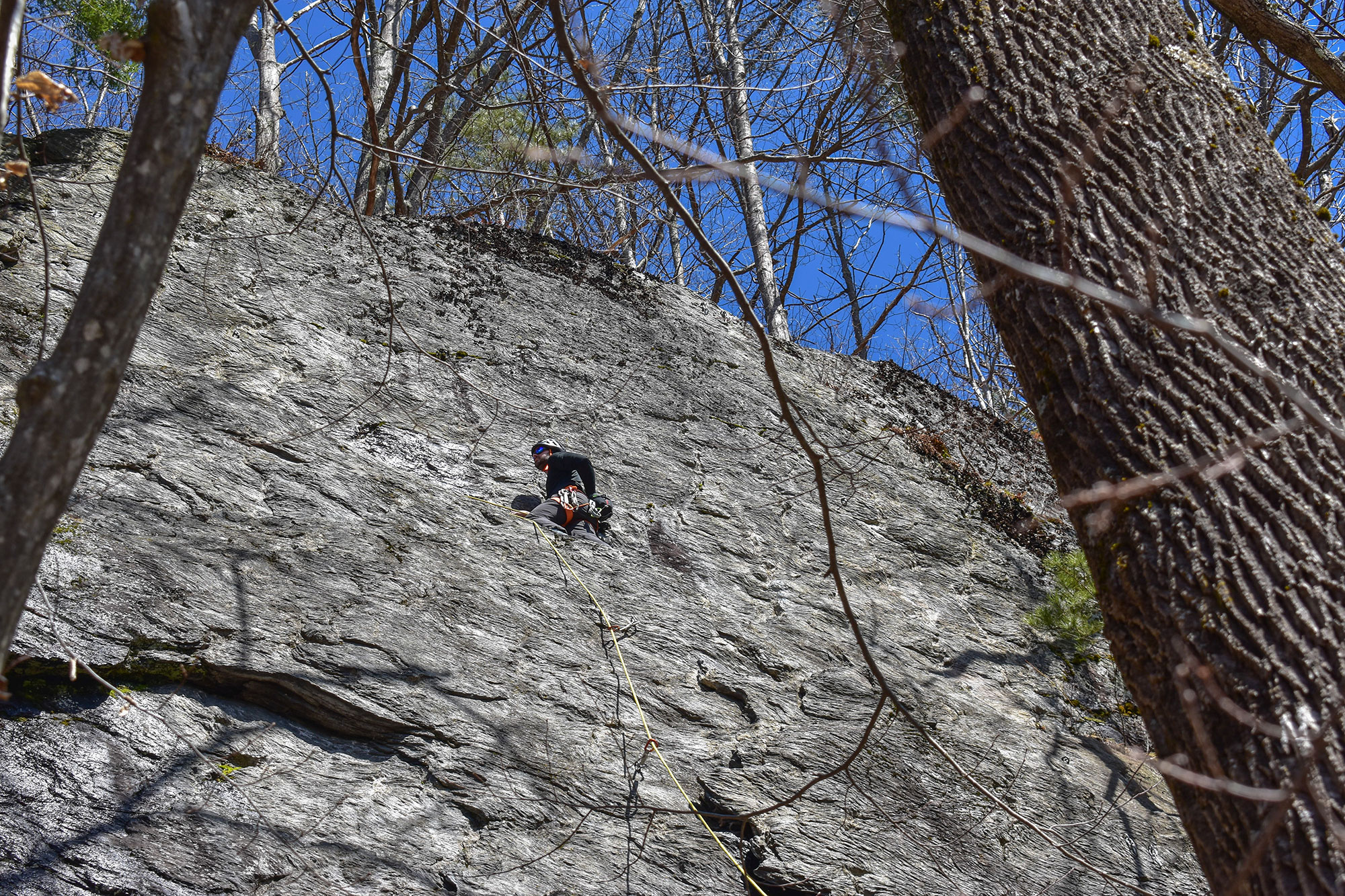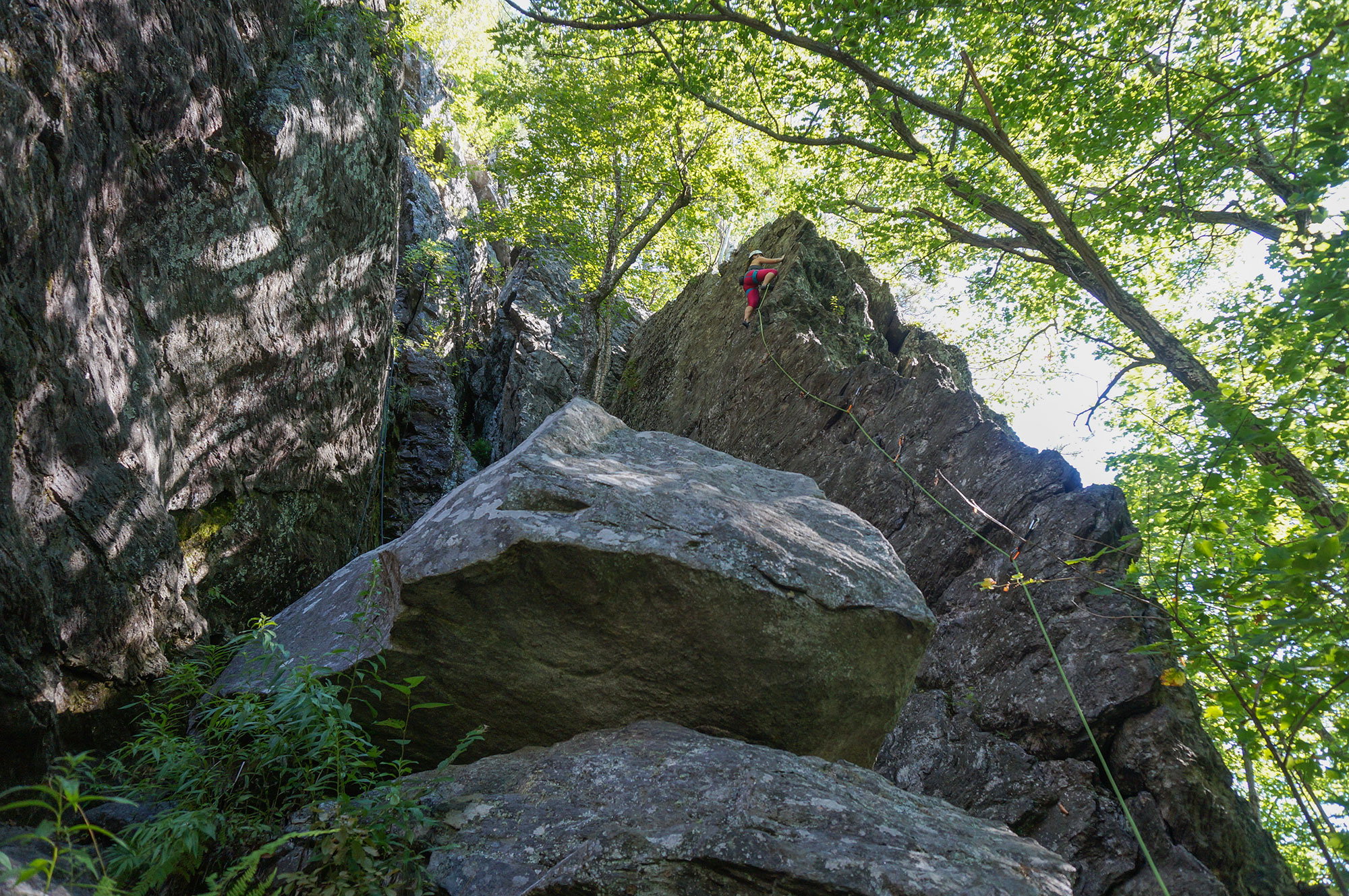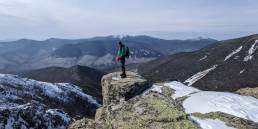The arrival of spring in New England has many climbers anxious to stop pulling plastic in the gym and to start getting outside to climb real rocks. While the spring season can pose some challenges—such as inconsistent weather and wet rock—getting out early in the season also offers some advantages, most notably, relatively thin crowds. It’s no surprise that New England’s premier sport climbing area, Rumney, is a popular spring destination. That said, Rumney features a myriad of cliffs and routes, some of which are better suited to spring climbing than others. Here’s where to check out at Rumney this spring.

Waimea
Rumney guidebook author Ward Smith calls Waimea the “crown jewel of Rumney.” It’s hard to argue, given the strikingly overhung nature of the crag and its preponderance of classic routes, including Rumney’s hardest, Jaws II (5.15a). The good news for spring visitors is that Waimea faces south, receives consistent sun, and enjoys a steady breeze, which, combined with its steepness, makes it climbable year-round. The bad news is that you better be able to pull pretty hard—like in the mid-12s—to climb here in the spring.
While most of the more moderate routes at Waimea remain wet throughout the spring, you can check in on their condition while on your way to Jimmy Cliff and Upper Vadar, two of Rumney’s more consistently dry spring crags. Waimea (5.10d), the cliff’s namesake route, is an absolute classic, but the route is commonly wet throughout the early season. Fortunately, due to its popularity, you can usually get the beta on whether it’s dry or not before making the hike. Long Board (5.10d) is one of the few other 10s at Waimea. It offers fun and engaging climbing but is also commonly wet for much of the spring.
Other climbs at Waimea within the reach of mere mortals include Flying Hawaiin (5.11b)—a dream line featuring varied, and at times spooky, climbing—and its similarly spicy neighbor Silver Surfer (5.12a). Both climbs are proud ticks, but not always prime for sending in spring.

Jimmy Cliff
Located literally above Waimea, Jimmy Cliff is another good place to search for dry rock in the spring—it gets all-day sun and a consistent breeze thanks to its position high on Rattlesnake Mountain. Jimmy Cliff is composed of two separate walls, referred to as the left side and right side. Both sides typically have some dry routes.
A handful of moderate routes from 5.5 to 5.9 are found in the alcove on the left side of Jimmy Cliff. These routes—Piece of Cake (5.5), Things I Should Have Learned in Kindergarten (5.6), Teacher’s Pet (5.7+), and Things I Never Learned (5.9)—all feature low cruxes that are generally dry. Just be aware that the easier climbing above sometimes seeps. Those looking to try hard will want to get a couple of burns on the bouldery Things As They Are Now (5.12a).
Further left past the alcove are a couple of moderate multi-pitch climbs, Clip a Dee Doo Dah (5.3) and Lady and the Tramp (5.4). It’s possible that they both might be a little damp, but it shouldn’t pose a problem to climbers comfortable at the grades.
The right side of the crag is home to two of Rumney’s most popular climbs: Junco (5.8+) and Lonesome Dove (5.10a). Both climbs get considerable sun and are commonly climbable throughout the spring.

Parking Lot Wall
Some of the best spring climbing at Rumney is laying in plain sight on the Parking Lot Wall—the middle of the crag receives an abundance of early morning sunshine and is often climbable year-round. The routes that are consistently dry are primarily moderates, making this an awesome spot for those who want to build skin that can stand up to gritty schist and gain confidence after a winter layoff. Typically dry climbs include:
- Glory Jean’s (5.6)
- Rise and Shine (5.7)
- Easily Amused (5.7)
- Easily Aroused (5.9)
- Egg McMeadows (5.9+)
- Rubicon (5.10b/c)
To the left and right of this group of dry moderate climbs are routes that are typically climbable, but may require climbing on some damp rock. The Parking Lot Wall has the added bonus of only being a short walk from the car, so if it’s wet, at least you didn’t burn a bunch of time hiking.

Buffalo Pit
The Buffalo Pit is another good bet for finding dry climbing in the spring. The Buffalo Pit is similar to the Parking Lot Wall in that the crag is just minutes from the car, which makes it easy to roll the dice on it being dry. Like other Rumney crags, the Buffalo Pit is likely to be a mixed bag of wet and dry climbs with easier routes on the ends and harder routes in the middle. Moderate climbers will want to check out Sodbster (5.9) and Fresh Fish (5.10a) on the far left side of the cliff and Lonesome Buffalo (5.8) on the far right.
A little farther right, climbers will find a challenge on the short and pumpy Sunnyside Up (5.10c), which can look wet but often the key holds and feet are dry. At the far right end of the cliff are Itchy (5.10c) and Scratchy (5.9), both of which require negotiating a wet ledge but offer dry rock above.

Main Cliff
Main Cliff, Rumney’s most prominent cliff, receives a generous amount of early- and mid-day sun which makes it a popular crag with winter and early spring climbers. While it’s tempting to venture up to this popular crag later in the spring, beware that much of the cliff is commonly closed between spring and summer for nesting peregrine falcons. For the latest status of Main Cliff, check in with the Rumney Climbers Association before you visit.
Do you have a favorite crag for spring climbing? If so, tell us about it in the comments!
Tim Peck and Doug Martland
Tim and Doug met long ago at the Eastern Mountain Sports in Canton, Massachusetts. Bonding over a love of slick Quincy Quarry granite, White Mountain sufferfests, and scheming up adventures while folding tee-shirts, today Tim and Doug collaborate to write about their favorite outdoor activities and occasionally get nostalgic about tee-shirt tables.
Related Posts
April 12, 2024
Explore Like a Local: The Outdoor Mecca of North Conway, NH
There's a lot to love about this New…
April 3, 2024
5 Things To Do in the Boston Area During Mud Season
Adventure opportunities are abundant…




